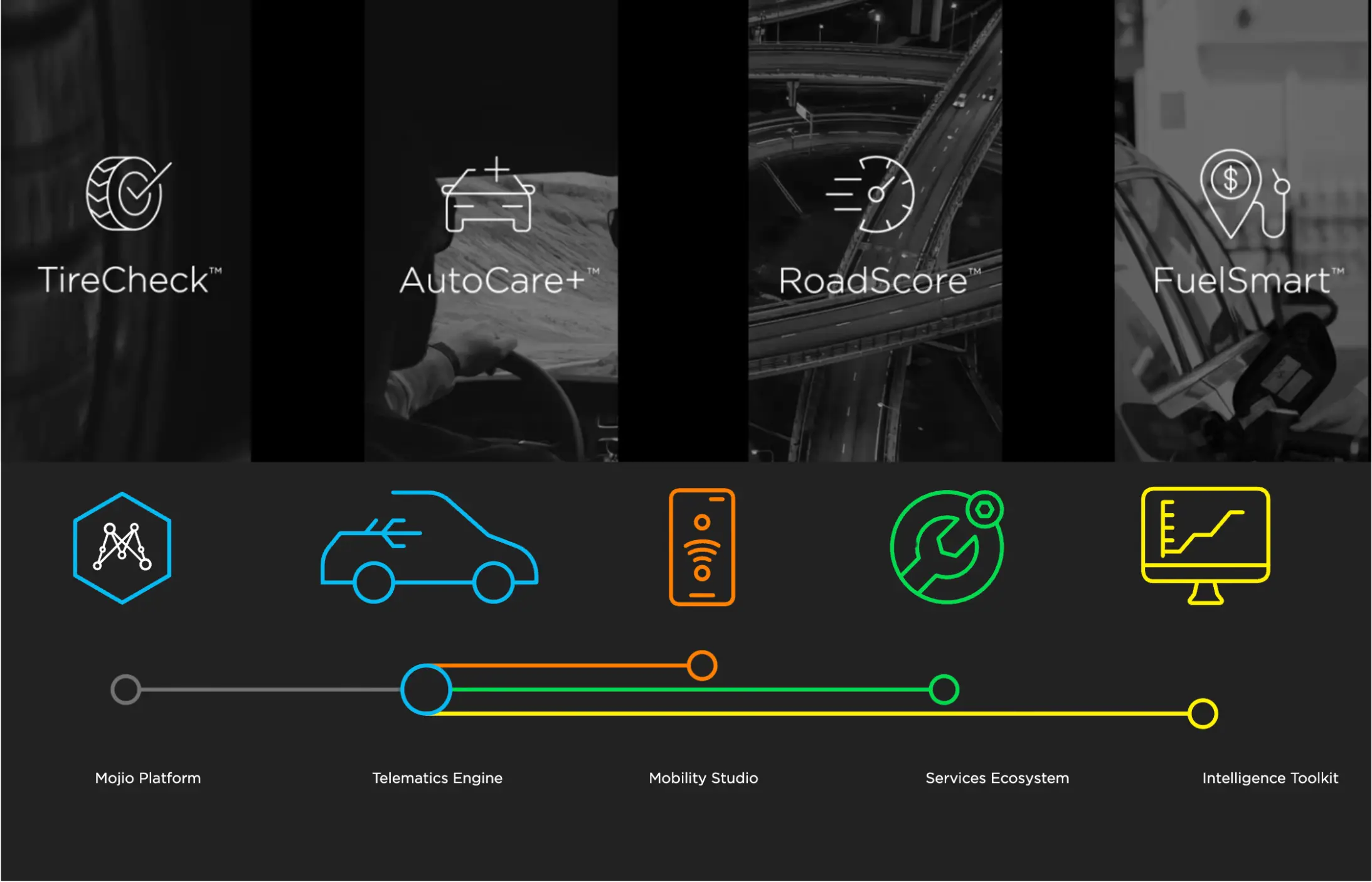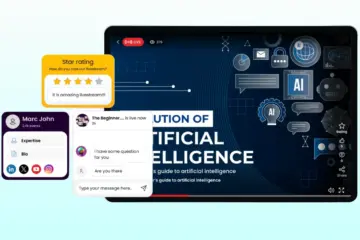Mojio Inc., a global leader in connected vehicle and fleet management, needed a highly reliable, low-latency video solution to power its LTE-connected dashcam platform. To achieve real-time visibility for fleet operators, Mojio adopted Ant Media Server and built a scalable, secure, and cloud-agnostic video telematics system that delivers Mojio real-time dashcam streaming from moving vehicles.
This case study explores how Mojio modernized fleet video telematics with Ant Media Server.
Table of Contents
About Mojio
Founded in 2012 and headquartered in Canada, Mojio Inc. is an industry leader in connected vehicle data solutions and fleet management technology. The company provides cloud-based telematics platforms that help consumers, families, and fleets monitor vehicle location, behavior, and performance in real time.
Over the years, Mojio has powered connected car programs for leading global brands including Audi, Bell, Deutsche Telekom, Rogers, Telus, and Vivint. Mojio’s ISO 27001–certified platform securely ingests, processes, and stores massive volumes of vehicle telematics data at scale.
In 2020, Mojio expanded into fleet telematics with Force Fleet Tracking, serving small and mid-sized businesses in the United States. In 2024, Mojio introduced the TrakView Dashcam, entering the video telematics space with LTE-connected dashcams capable of real-time video streaming.
As Mojio rolls out Force Fleet Tracking to Canada in 2025—and to Europe and Latin America starting in 2026—it needed a future-ready video platform to support global expansion.

The Challenge
To power its new LTE-connected dashcam, Mojio needed a video management solution capable of delivering:
- Real-time video streaming from moving vehicles
- On-demand video uploads to the cloud for review
- Scalability to support thousands of concurrent fleet videos
- Secure data access
- Cloud-provider flexibility (no vendor lock-in)
The team’s biggest challenge was achieving Mojio real-time dashcam streaming with consistently low latency over cellular networks—especially for fleets operating in motion.
Exploring Solutions
Mojio initially explored Azure Media Services, but it posed critical limitations:
- Azure dependency (no cloud-agnostic flexibility)
- Long-term uncertainty due to deprecation
- Less control over operational cost and scaling strategy
As a result, Mojio searched for a solution offering:
- Ultra-low latency performance
- Cross-cloud deployment options
- Easy API integration
- Open-source extensibility
- Reliable streaming over LTE

Why Mojio Chose Ant Media Server
After evaluating alternatives, Mojio selected Ant Media Server as the optimal platform for powering its connected video telematics solution.
Key Reasons Mojio Chose Ant Media Server
- Ultra-low latency WebRTC streaming, ideal for vehicles in motion
- Cloud-agnostic deployment to reduce cost and avoid vendor lock-in
- One-time token security for video access
- Open-source transparency with full control over implementation
- Protocol versatility (RTMP ingestion from dashcams → WebRTC playback)
- Easy proof-of-concept deployment with the Community Edition
- Scalability to support multiple concurrent streams
Ant Media Server enabled Mojio to deliver a seamless, secure, and robust real-time dashcam streaming experience.
Implementation & Results
By integrating Ant Media Server into the TrakView Dashcam architecture, Mojio built a complete video telematics platform that delivers:
Reliable scaling across fleets of all sizes
Live video from moving vehicles in real time
Fast storage and retrieval of recorded videos
Secure access with tokenized URLs
Cloud independence for better operational flexibility
Cost optimization via self-hosted deployments

Results Achieved:
- Real-time visibility into fleet activities
- Efficient on-demand video storage
- Smooth user experience for fleet managers
- Open-source advantage for faster feature development
- Support for multiple 1:1 live streams
- Lower infrastructure cost through cloud-agnostic deployments
“Ant Media Server’s low latency, flexibility, and open-source transparency allowed us to build a scalable, secure, and efficient video telematics solution. It enabled real-time streaming from moving vehicles and seamless integration into our existing cloud infrastructure.”
— Mojio Engineering Team
What’s Next for Mojio?
After two years of operating its Mojio real-time dashcam streaming platform, Mojio is planning new enhancements to improve performance, management, and container-native deployment.
Future Focus Areas
- Stream and session usage limits
- Time-based auto deletion (TTL)
- Support for additional databases (e.g., Couchbase)
- Fine-grained API access controls
- Native telemetry (OpenMetrics, OpenTelemetry)
- Centralized audit logs
- Lightweight Docker base images (Alpine)
- Improved clustering without sticky sessions
- AWS SDK–based S3 authentication
- More flexible Kubernetes/Helm integration
These upgrades will help Mojio scale its video telematics platform across new markets.
Final Thoughts
The partnership between Mojio and Ant Media Server showcases how powerful, low-latency streaming technology can transform fleet visibility and safety. With Mojio real-time dashcam streaming, the company built a scalable, cloud-agnostic, and secure video telematics ecosystem that empowers fleets with real-time insights.
As Mojio continues expanding globally, Ant Media Server remains a foundational component of its video innovation strategy.
Estimate Your Streaming Costs
Use our free Cost Calculator to find out how much you can save with Ant Media Server based on your usage.
Open Cost Calculator

